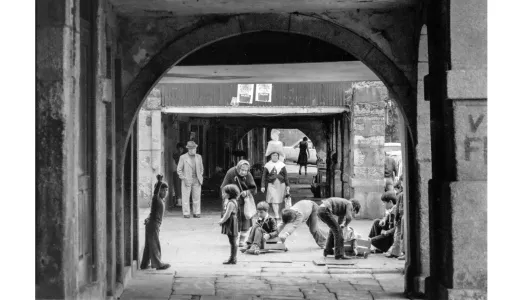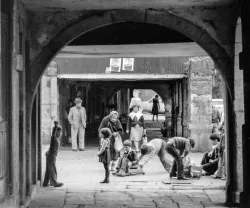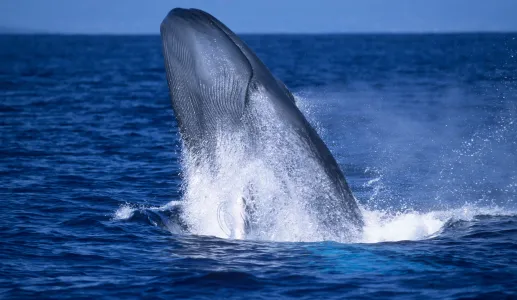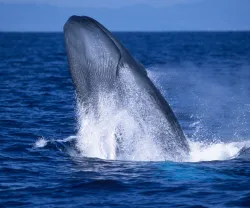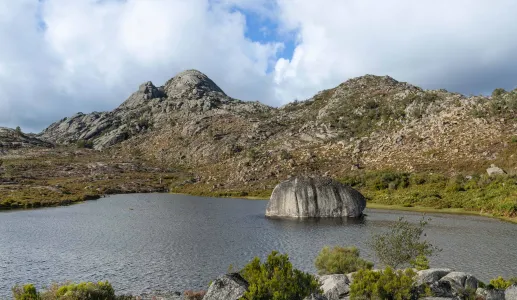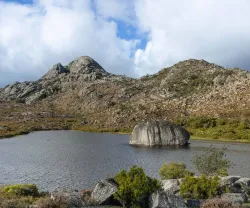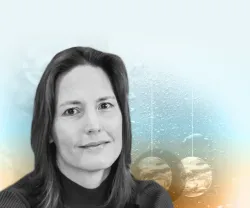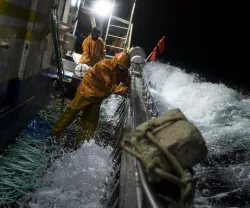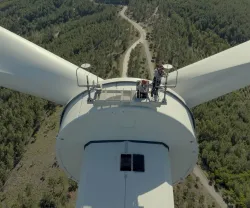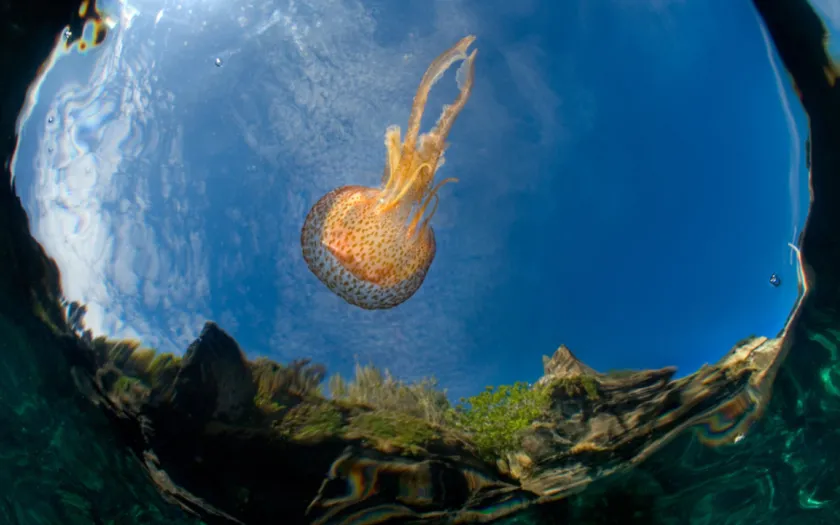
Hidden wonders of the Portuguese sea
The largest migratory journey on the planet Earth takes place in the oceans every night. Millions of tiny creatures move from the deepest reaches of the ocean to just below the surface. Under cover of darkness, a biomass of thousands of tonnes moves dozens or hundreds of metres up the water column to feed on phytoplankton.
Plankton is made up of countless living beings that, while capable of movement, are unable to swim against ocean currents. In the infinite universe of plankton, these organisms are divided into two large groups, phytoplankton, capable of photosynthesis, and zooplankton, which are not. The creatures making up the plankton can be beautiful, enchanting or bizarre. They can be invisible to the naked eye or as much as several metres long.
This article and the photo gallery uncover some of the zooplankton that are to be found in Portuguese waters.
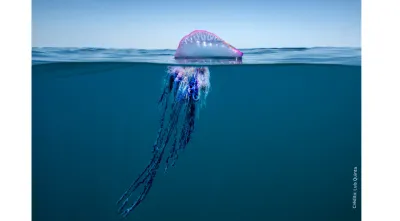
All along the Portuguese coast, several species of jellies, or gelatinous animals, can be found, as well as more complex jellies, such as the Portuguese Man O'War.
The Portuguese name and the weird and wonderful appearance hide a complex animal that is toxic to the touch.
Science describes this creature as a set of four different individuals with different functions, living live together in a colony. One of the parts, a gas-filled bladder, allows the colony to float on the surface. Another individual takes care of hunting, the reproductive organs are in a different polyp and, finally, we have the digestive system, which is described as yet another organism.
The Portuguese Man O'War is one of the favourite delicacies of turtles.
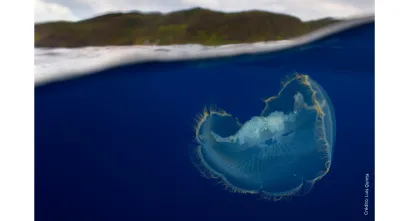
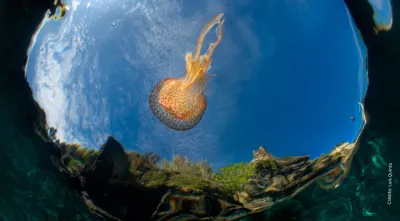
Sometimes when I’m drifting on my boat off Cape Espichel, I see fluorescent micro animals bobbing about just a few centimetres below the surface.
They are crustaceans, copepods of different species which, due to the angle of the light hitting their lustrous bodies, reflect the assorted colours of the rainbow.
Some species, only two or three millimetres long, spend their entire lives on the surface of the ocean, never going more than a few millimetres below it. Others hitch a ride on jellyfish and travel long distances, comfortably ensconced on their host.
More than 12,000 species of copepods have been described.
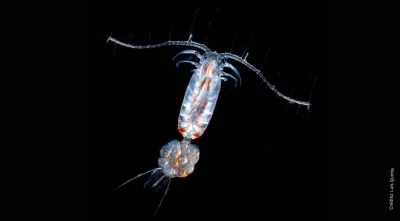
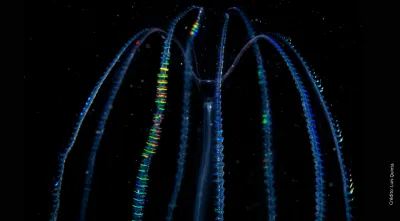
At the first glimmer of light in a new dawn, this multitude of tiny beings dives back down to the bottom of the sea, meeting countless predators along the way. But these little creatures are sometimes so voracious they even hunt each other.
Crustaceans, fish larvae, eggs from a myriad of species, gelatinous animals, these can all be part of this rich soup that serves as the staple diet of large schools of fish, such as sardines, mackerel, horse mackerel, halfbeak and many more.
This broth is so nutritious that large sharks, like the whale shark and the basking shark, relish in its delights.
Many large whales prefer to feed on plankton but, at times of abundance, they have also been known to eat small schooling fish.
While the group of gelatinous animals, jellyfish, comb jellies and salp is quite diverse, the world of crustaceans is virtually limitless. Copepods, shrimp and crabs are just some of the most commonly found creatures.
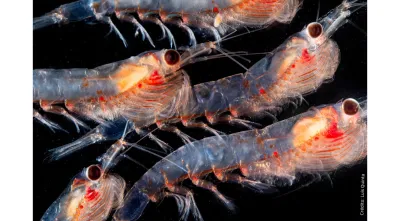
Countless species of crustaceans go through larval stages, where they bear no resemblance to the final adults that we are all familiar with.
For example, after hatching from eggs, crabs go through a zoea larval stage, in which they typically have different kinds of spiny appendages. A few days later, depending on the species, they turn into megalopa, another larval stage, now looking more like the final version, but still remain suspended in the water column.
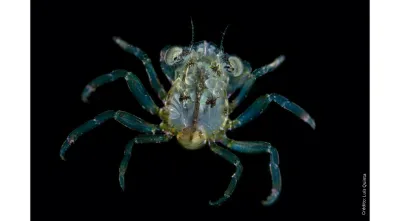
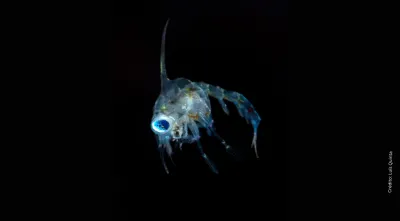
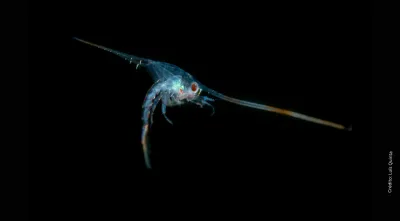
Many of these creatures spend their entire lives on the high seas, simply hanging there in the water. Many others are only considered plankton at one stage in their lives, when they are still eggs or in the larval stage of their lifecycle.
In this sea of marine organisms, there are stories of remarkable, complex and extremely elaborate lives, which are not widely known in many cases.
Velella velella (by-the-wind sailor), which can be found in groups of several million off the Portuguese coast, serve as food for the charismatic sunfish. They also make tasty meals for pelagic gastropods, such as Janthina janthina.
Small sea snails lodge themselves among the tentacles of gelatinous animals and feed on them according to their needs.
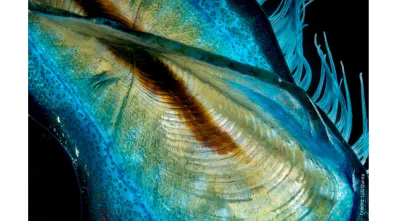
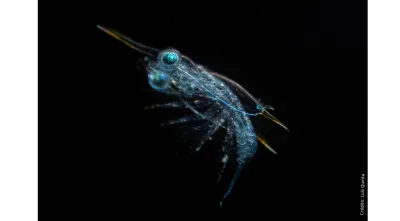
In the cold, dark abysses of the Portuguese seas, the females of a rather bizarre looking crustacean, Phronima sp., latch on to gelatinous animals, mainly salp, and prepare to raise their young.
After getting inside the salp, the phronima eats most of the flesh, with the outer surface of the animal remaining intact, to serve as a nursery for the eggs developing in her pouch.
With robust pincers disproportionate to the size of her body, the female “remodels” the interior to house the newborns.
After hatching, the dozens of mini crustaceans feed on the host that carries them, supervised by their mother, who stays with them throughout the entire juvenile stage.
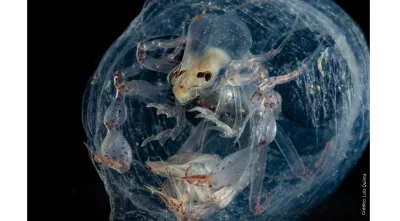
The entire world of zooplankton is organised by sizes and distribution areas in the water column.
All the living beings more than 20 cm long are classified as megaplankton. Macroplankton are between 2 cm and 20 cm long and mesoplankton are between 0.2 mm and 2 cm. There are also four other scales, but these are not visible to the naked eye.


